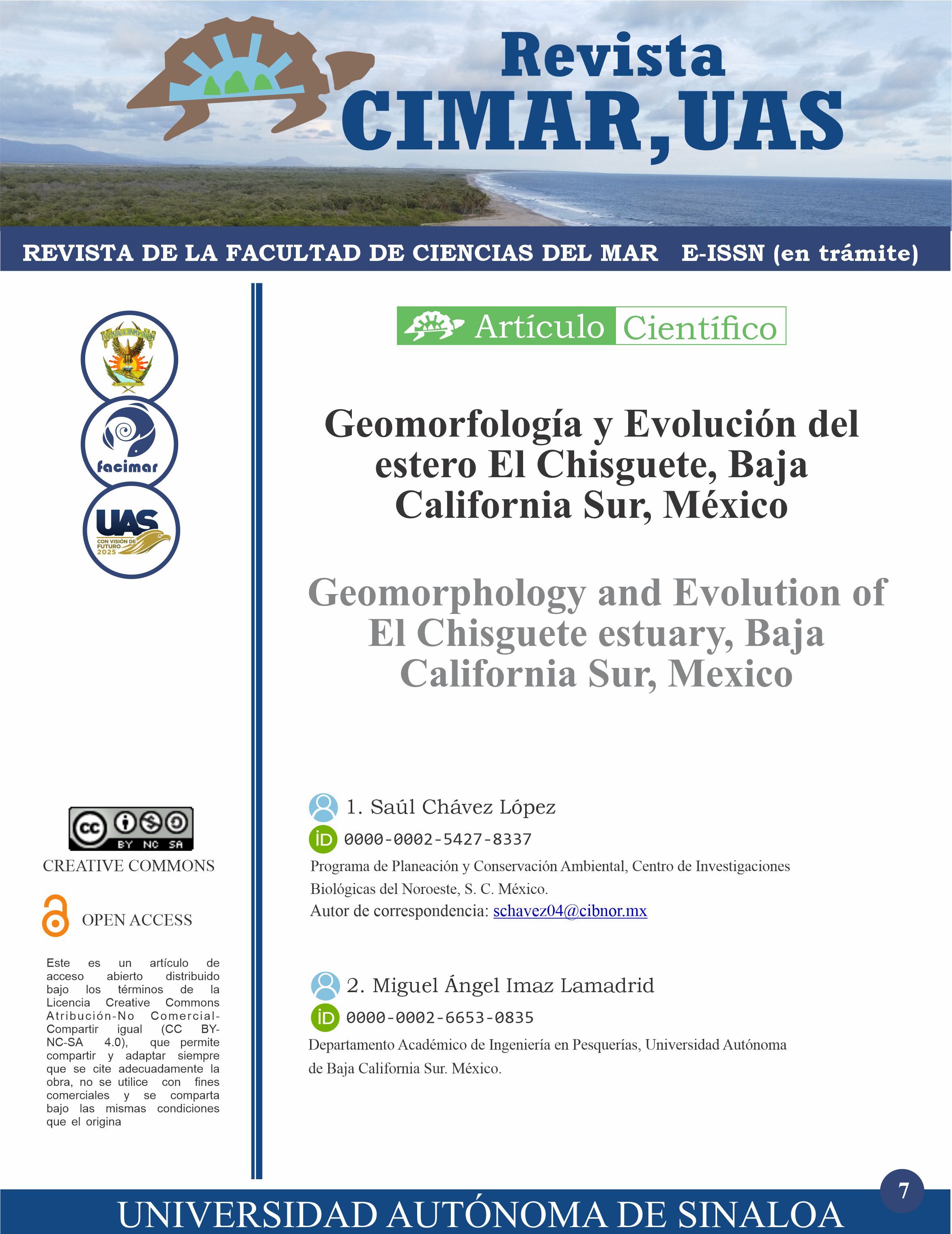Geomorfología y Evolución del Estero el Chisguete, Baja California Sur, México.
Palabras clave:
Estero, Geomorfología, Morfodinámica, Sedimentos, EvoluciónResumen
El estero el Chisguete forma parte del complejo lagunar Santo Domingo - Magdalena - Almejas, es uno de los ecosistemas lagunares con mayor biodiversidad y atractivo pesquero y ecoturístico en el estado. Lo que justifica analizar su geomorfología y evolución, empleando las metodologías de cambios geomorfológicos y morfodinámicos. El estero corresponde a una laguna, destaca de entre otros cuerpos de agua marginales, por el desarrollo de dos barreras. Su geomorfología está constituida por depósitos terrígenos en la llanura aluvial, y hacia su franja costera por depósitos de origen marino y eólico; dando forma a marismas, pantanos de manglar, dunas, barreras y playas, que se acoplan como ecosistemas vecinos. En general el estero es somero, con profundidad media de un metro, y su hidrodinámica está condicionada por las corrientes de marea y oleaje de tipo local. El proceso morfodinámico de las barreras oriental (E) y occidental (W), para el periodo analizado (1973 - 2022), muestra una tasa evolutiva de 0.027 km2 y 0.0034 km2 respectivamente. Por lo que mantiene un buen estado de conservación, en donde sus cambios se presentan como una remodelación de origen natural. Lo que permite emplear el estado evolutivo de las barreras como geoindicador ambiental.
Descargas


 Cada manuscrito está bajo la licencia Atribución-NoComercial-SinDerivadas 4.0 Internacional (CC BY-NC-ND 4.0). Puedes consultar los términos de la licencia en el siguiente enlace:
Cada manuscrito está bajo la licencia Atribución-NoComercial-SinDerivadas 4.0 Internacional (CC BY-NC-ND 4.0). Puedes consultar los términos de la licencia en el siguiente enlace: 